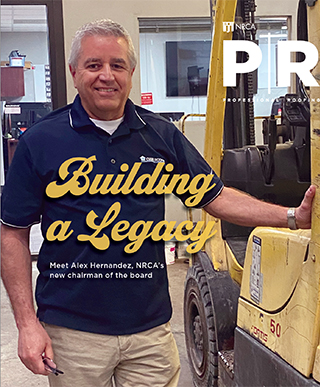In January, NRCA published The NRCA Roofing Manual: Steep-slope Roof Systems—2017. This new volume updates NRCA's best practice guidelines applicable to steep-slope roof assemblies and replaces the previous edition, which was published in 2013.
2017 volume
The 2017 volume consists of 707 pages (the 2013 volume has 575 pages) and is divided into five primary sections addressing asphalt shingle, clay and concrete tile, metal shingle, slate, and wood shake and shingle roof systems.
Each section is further divided into the following chapters: Chapter 1—Roof System Configurations; Chapter 2—Roof Decks; Chapter 3—Underlayments; Chapter 4, which addresses the primary roof covering type for that section; Chapter 5—Reroofing; and Chapter 6—Construction Details.
Notable changes
Although NRCA's best practice guidelines for steep-slope roof assemblies have been well-established since 1981, there are a number of changes incorporated into the 2017 volume.
New "how to use" guidance has been added at the beginning of each section to show users how to best use the manual's content. NRCA recognizes its manual is more commonly used as a reference document, and the current volume has been reformatted accordingly. Roof system configuration descriptions have been moved from Chapter 4 within each roof system-specific section of the 2013 manual to Chapter 1—Roof System Configurations in each section of the 2017 volume. The roof system configurations serve somewhat as a table of contents or index to information specific to each roof system type.
The roof system configurations for new construction or roof system replacement and roof re-cover also have been consolidated in Chapter 1. Additional roof system configuration descriptions have been added for multilayer underlayment configurations.
Also, new information has been added to each roof system-specific section addressing underlayment attachment in high-wind areas. The International Building Code, 2015 Edition and International Residential Code, 2015 Edition contain new (and somewhat differing) attachment requirements for underlayment in high-wind regions. Where applicable, NRCA recommends compliance with these code requirements.
Chapter 5 in each section of the 2017 volume has been expanded to address guidelines applicable to reroofing. Chapter 5—Reroofing provides new guidelines for evaluating existing roof systems, information about building code requirements for reroofing, and guidelines for roof decks and proper roof re-cover and roof replacement design for each roof system type.
Appendix 1—Roof Accessories has been expanded to better address flashing rooftop, rack-mounted photovoltaic (PV) system supports. NRCA recommends PV support systems flashings have a flanged base, similar to what NRCA recommends for other roof penetration flashings. (This is illustrated in the volume's detail ASPH-15-Vent Pipe Penetration.) Additional information applicable to rooftop-mounted PV installations is provided in NRCA Guidelines for Rooftop-mounted Photovoltaic Systems.
Appendix 2—Radiant Barriers provides new considerations and building code requirements for radiant barriers used in attics and as roof assembly components. Because of the potential accelerated aging effect radiant barriers can have on roofing materials, NRCA does not recommend the use of radiant barriers in attics or roof assembly components.
Appendix 5—Interim Updates has been added as a placeholder reserved for providing brief overviews of future interim changes to the electronic versions of the manual.
Get it
The 2017 volume is available for purchase in hardcover and electronic formats and as part of The NRCA Roofing Manual—2017 Boxed Set. NRCA members can access the manual electronically for free via NRCA's online bookstore, shop.nrca.net, and on the NRCA app.
The construction details from The NRCA Roofing Manual are available in an AutoCAD®-compatible format as The NRCA Construction Details: CAD Files—2017 and can be purchased at shop.nrca.net. NRCA members also can access the CAD files of the construction details free of charge via shop.nrca.net.
I encourage you to update your library with these best practice guidelines.
Mark S. Graham is NRCA's vice president of technical services.



